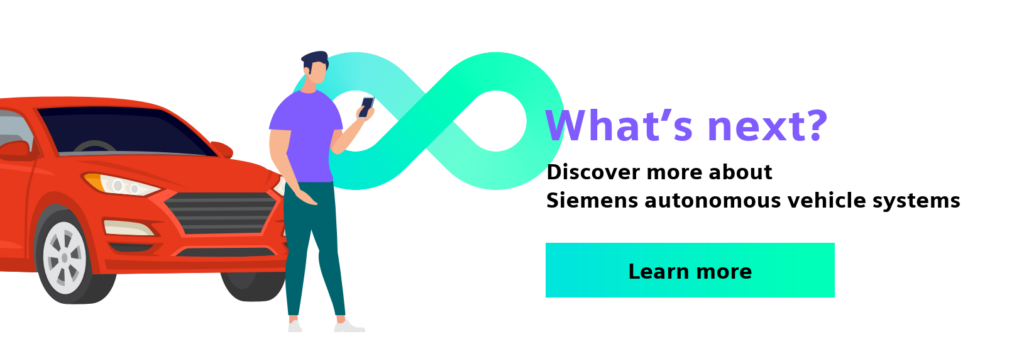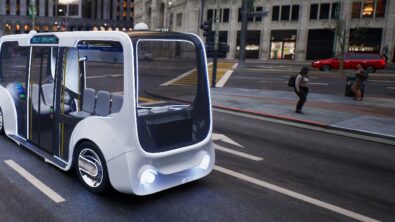How to keep up with the continued growth of autonomous vehicle systems

The automotive industry is striving to reach higher levels of autonomous driving. With ADAS (advanced driver-assisted systems) acting as a stepping stone, technology is advancing from basic driver assistance features to more advanced capabilities, with some vehicles offering higher levels of automation in specific scenarios.
However, companies developing these self-driving systems, whether by traditional automakers or technology start-ups, have incurred substantial expenses in bringing this technology to market. In this article, you’ll learn how to enable a cost-efficient, continuous learning process to accelerate the delivery of safe, secure, and compliant autonomous technologies.
How much economic value will autonomous vehicles create?
The landscape is competitive, with traditional automakers, technology companies, and new entrants vying for a share of the autonomous driving market, specifically in the private passenger car segment. This competition is driving innovation and investments in research and development, with ride-hailing and ride-sharing services expecting to play a more prominent role.
While market dynamics, including pricing strategies and competitive positioning, will impact revenue streams, projections show that ADAS and autonomous vehicle (AV) systems could create up to $400 billion in revenues by 2035.
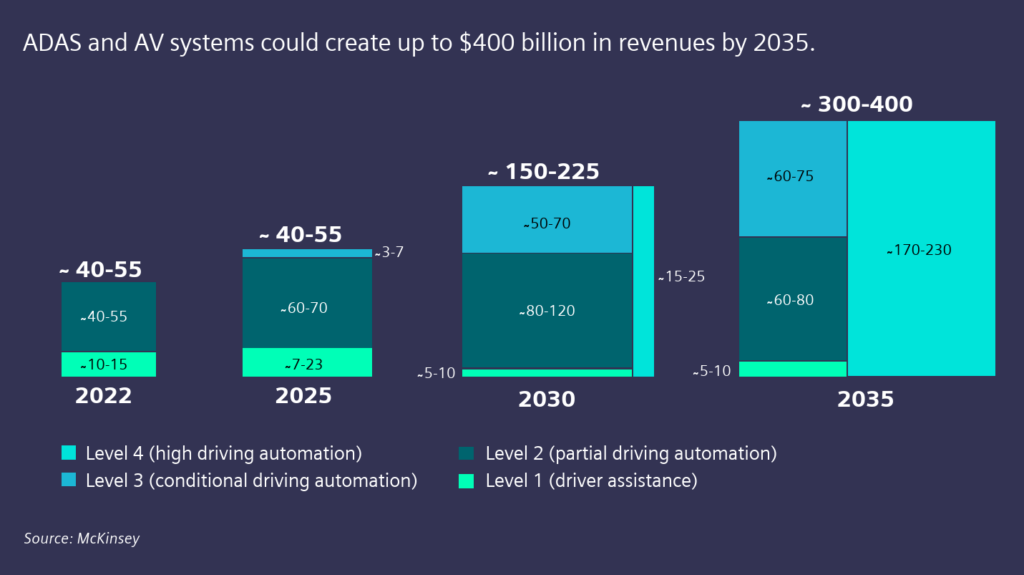
Why is software important for ADAS and AV development?
As the landscape of autonomous driving revenues in the private passenger car segment has been evolving, one thing remains clear— autonomous driving technology requires significant investment in research, development, and testing. Integrating advanced computing technologies such as ADAS and autonomous driving turn cars into complex, interconnected computer systems, enhancing vehicle performance, safety, and efficiency.
This opens up new possibilities for innovation and improvement through software updates and driving technological advancements such as sensor technologies, artificial intelligence, and machine learning. The software needed for ADAS and AD software will likely increase by 11% yearly.
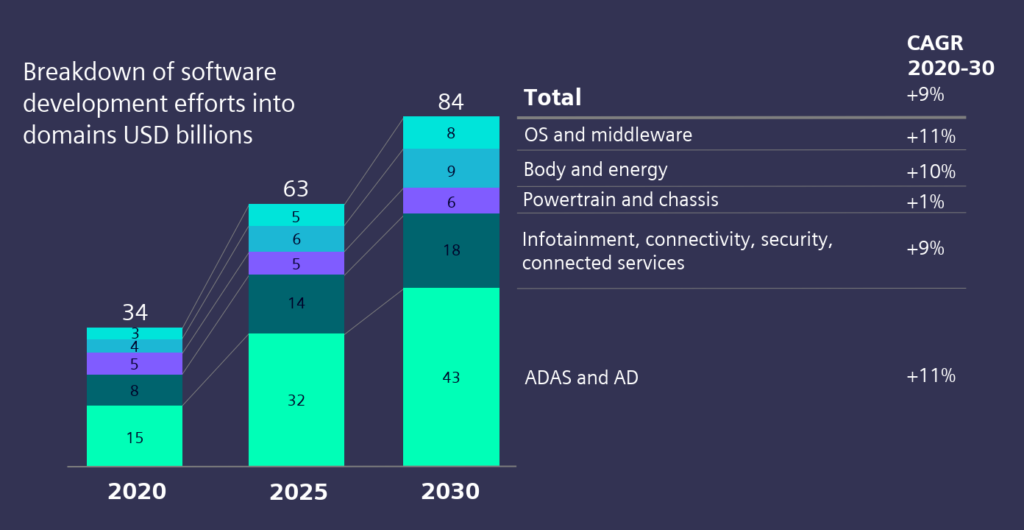
Autonomous vehicles rely on interconnected subsystems to facilitate seamless and efficient operation, ensuring that various components work together cohesively. Software plays a crucial role, serving as the brain that enables the vehicle to perceive its environment, make decisions, and control its movements. The interconnected nature of these subsystems enhances the vehicle’s ability to perceive its environment, make informed decisions, and execute precise control actions.
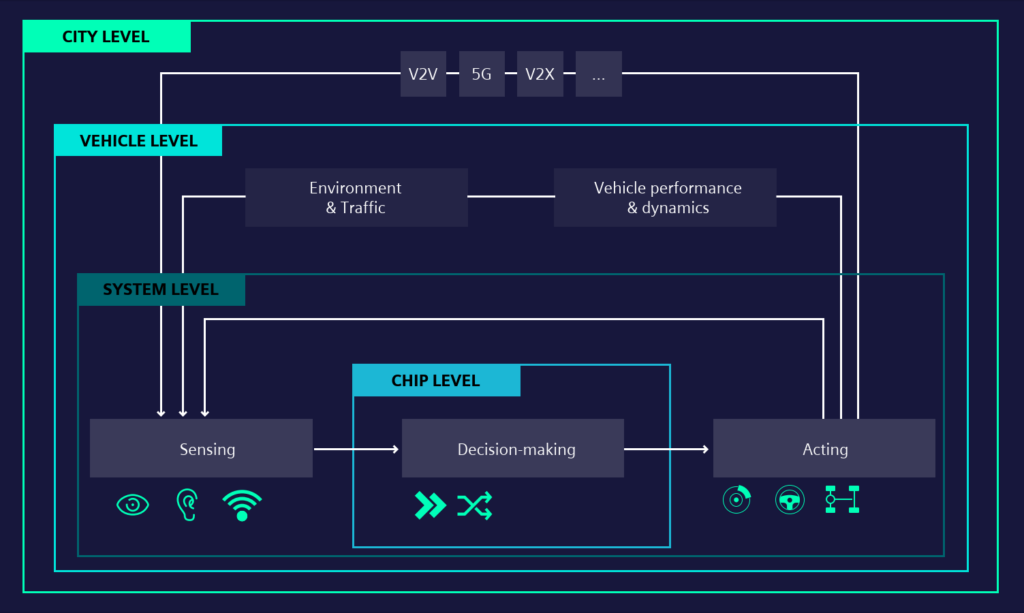
In addition to overcoming new challenges around developing complex systems of systems, regulatory frameworks play a crucial role in shaping the market outlook. Governments are working to establish guidelines for testing and deployment, addressing liability concerns, and ensuring the safety of autonomous vehicles. The regulatory landscape varies by region and may impact the speed of adoption, public perception and acceptance of autonomous vehicles.

Lastly, automotive companies must not only focus on adapting their development processes to meet the new technological demands but also build trust in the safety and reliability of self-driving technology to influence consumer adoption.
Traditional auto development processes are not able to meet the new demands
While developing autonomous vehicles is a complex and multidisciplinary task that involves various technological, regulatory, and societal considerations, the benefits are undeniable. Experts believe that autonomous driving systems could transform the future of transportation by eliminating accidents caused by human error, lowering emissions, reducing traffic congestion, and improving accessibility. However, traditional ADAS and AV development processes cannot meet the new demands.
- Inability to design the best architecture within the constraints of your system
- Inability to sign off your ADAS and AV system with confidence
- Inability to deliver on time, at speed and within budget
- Noncompliance with regulatory mandates or consumer expectations
- Risk of system performance issues, recalls, or legal prosecution
So, if traditional processes won’t work, how can you deliver trustworthy and compliant ADAS and AV systems that function effectively in the widest possible range of conditions?
Develop trustworthy autonomy faster with Siemens solutions
Autonomous vehicles and features can only be deployed when they are safe, secure, and certified. Siemens provides a customized solution to help you innovate, optimize, and validate designs. With our powerful tools, you can leverage the functional digital twin, simulation, real-world recordings and our patented critical scenario methodology to accelerate the delivery of safe, secure, high-performing and compliant autonomous driving.
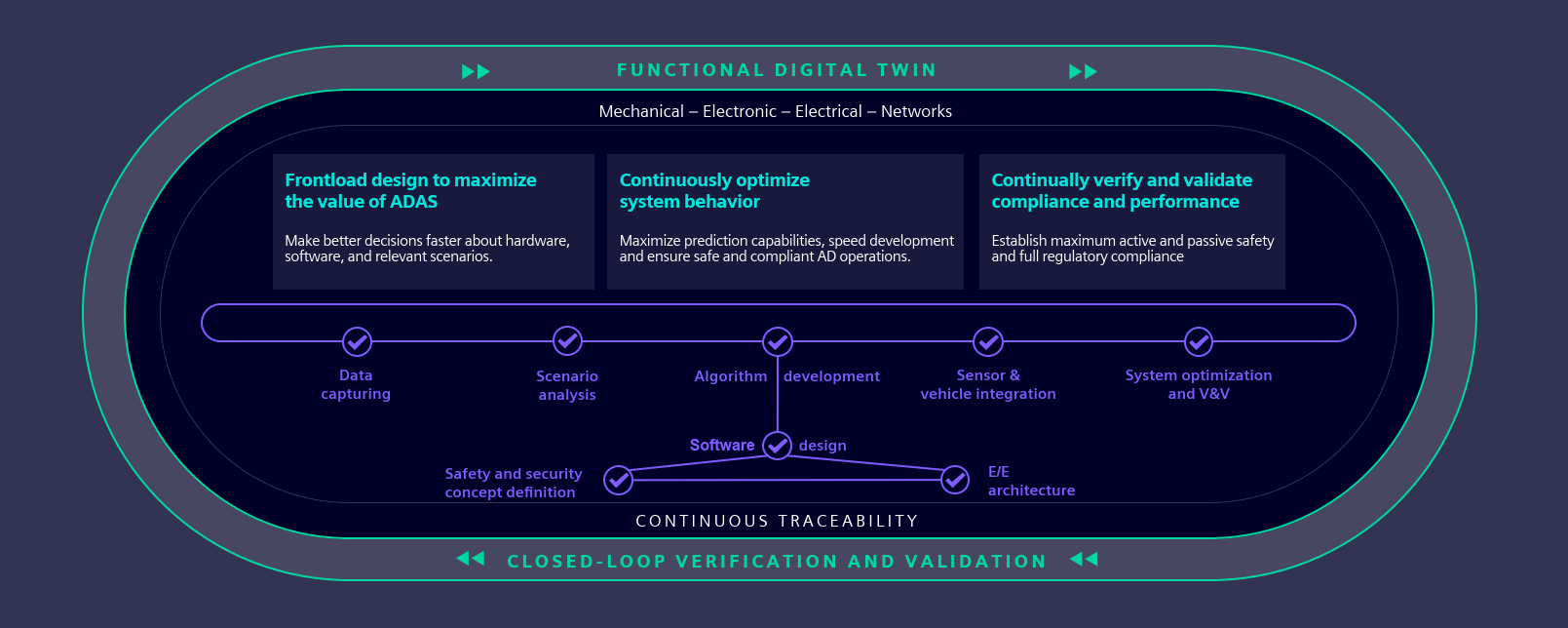
With Siemens solutions, you can accelerate the engineering, testing and certification of autonomous vehicles and systems, record driving scenarios, and organize them on the spot so that the information is always accessible. Then, you can adjust the parameters in the virtual world to expand your database rapidly and build a functional digital twin that includes models, sensors, and scenarios and requires multi-domain simulation to integrate your hardware and software. Lastly, you can ensure that your vehicle sensors think and act appropriately in every situation using a combination of physical and virtual testing.
